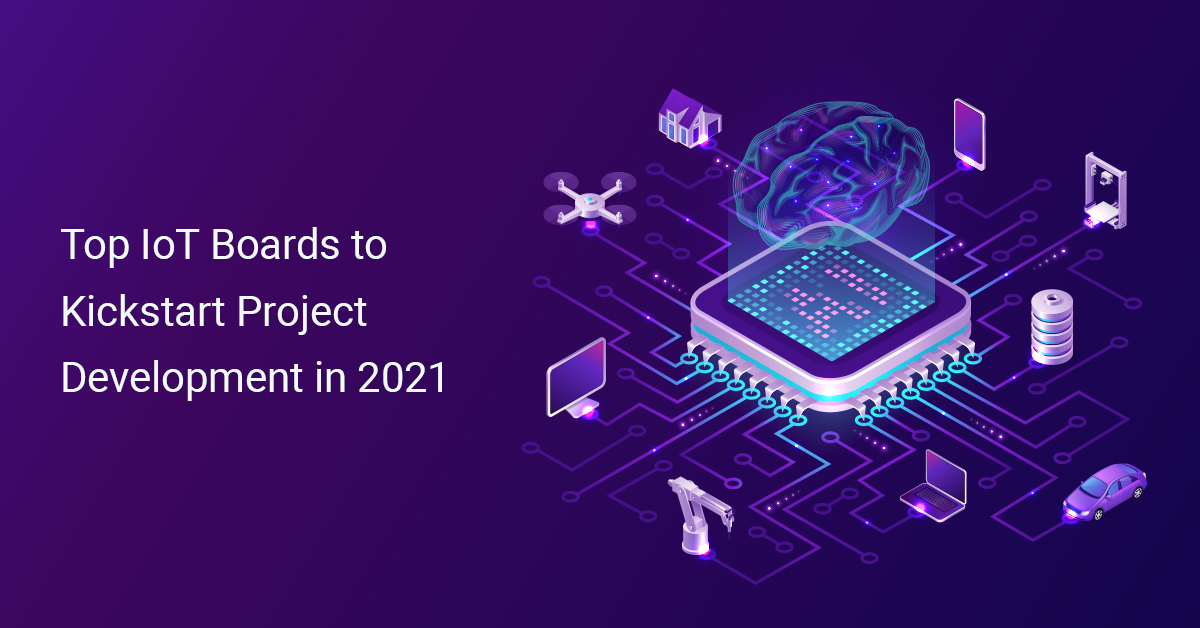IoT is an extensive domain rising at a rapid pace and engaging the industry’s big players. With modern age transformation, the number of available IoT development boards is also mounting. But, there is not any single IoT board that we can consider the best for multiple reasons.
The IoT apps have different requirements and need to use plenty of IoT boards to address those requirements. There are several IoT ecosystems based on various connectivity solutions. It can be easily applied to one board but not to another. The IoT apps can be hardware-oriented in one way while software-oriented in other ways or might need a balanced percentage of computing power and hardware choices inside the same app.
There are also different IoT platforms and some of the IoT boards specifically designed to connect with proprietary platforms.
What is a Development Board? Why is it used?
A development board is a circuit board with wiring and hardware designs that will help to experiment with specific micro-controllers. These boards are created to make an engineer’s life easy and efficient while prototyping and developing.
Just imagine, you have a micro-controller that can perform many things but to leverage it, you need to set up initially a group of different circuits and hardware on your breadboard every time. It’s quite an irritating task for smart engineers nowadays, to set up circuits every time. To overcome this issue, hardware circuits are helpful with testing and debugging.
Aspects to consider while selecting an IoT board
You can choose wisely by filtering your needs based on the following aspects.
- Project size
- Necessary connectivity solutions
- App purpose
- Essential IoT protocol(s) implementation
- Firmware complications at every node
- Necessary connection with particular IoT platform
- Support of community
- Compatibility of Hardware and Software among several nodes in the IoT network
- Size of the IoT device or the object
- Software support (libraries to apply IoT protocols, sensor integrations, data obtaining)
- Number and type of sensors to be incorporated at multiple nodes
Top IoT boards in 2021
Take a look at some of the well-known IoT development boards and their technical specifications.
1. Arduino UNO REV3
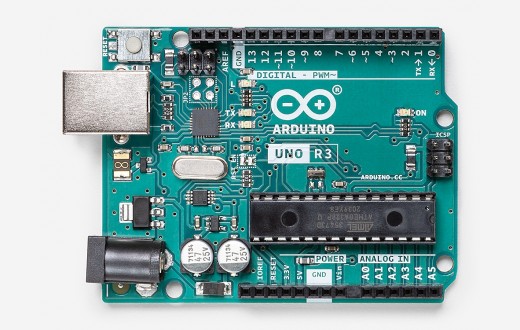
Technical Features
- Microcontroller: ATmega328P
- Operating Voltage: 5V
- Input Voltage (recommended): 7-12V
- Input Voltage (limit): 6-20V
- Digital I/O Pins : 14 (of which 6 provide PWM output)
- PWM Digital I/O Pins: 6
- Analog Input Pins: 6
- DC Current per I/O Pin: 20 mA
- DC Current for 3.3V Pin: 50 mA
- Flash Memory: 32 KB (ATmega328P) of which 0.5 KB used by bootloader
- SRAM: 2 KB (ATmega328P)
- EEPROM: 1 KB (ATmega328P)
- Clock Speed: 16 MHz
- LED_BUILTIN: 13
- Length: 68.6 mm
- Width: 53.4 mm
- Weight: 25 g
2. Raspberry Pi 4 Model B

Technical Features
- Processor: Broadcom BCM2711, Quad core Cortex-A72 (ARM v8) 64-bit SoC @ 1.5GHz
- Memory: 2GB, 4GB or 8GB LPDDR4-3200 SDRAM (depending on model)
- Connectivity: 2.4 GHz and 5.0 GHz IEEE 802.11ac wireless, Bluetooth 5.0, BLE, Gigabit Ethernet,
- 2 USB 3.0 ports; 2 USB 2.0 ports.
- Raspberry Pi standard 40 pin GPIO header (fully backwards compatible with previous boards)
- 2 × micro-HDMI ports (up to 4kp60 supported)
- 2-lane MIPI DSI display port
- 2-lane MIPI CSI camera port
- 4-pole stereo audio and composite video port
- H.265 (4kp60 decode), H264 (1080p60 decode, 1080p30 encode)
- OpenGL ES 3.0 graphics
- Storage: Micro-SD card slot
- Sensing: 40 GPIO, I2C, SPI, UART, MIPI CSI camera port
- Actuation: 40 GPIO, PWM, MIPI DSI connector
- Power: Power Ethernet (PoE) enabled (requires separate PoE HAT), temperature: 0 – 50 degrees C ambient
3. Giant Board
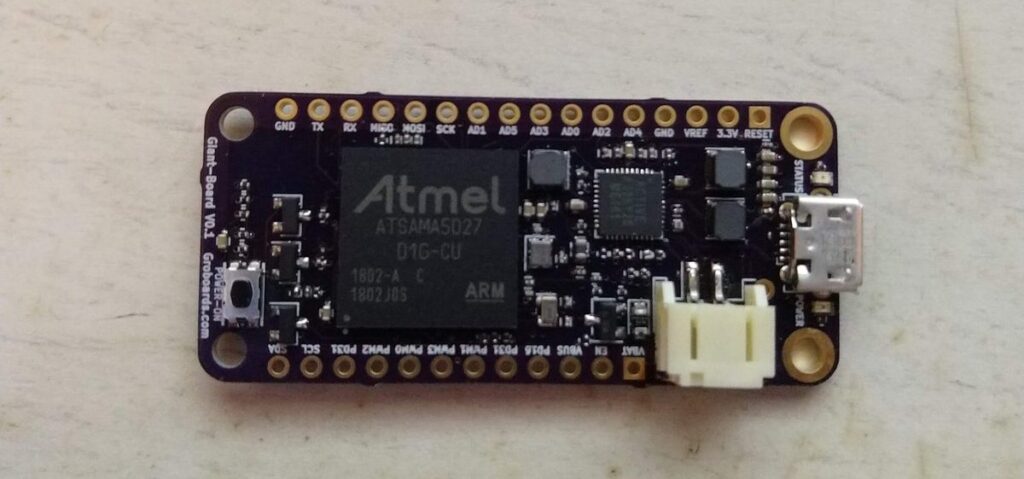
Technical Features
- Microchip SAMA5D2 ARM® Cortex®-A5 Processor 500MHz
- 128MB DDR2 RAM built-in to the SiP
- 6X 12-Bit ADC with 3.3V Reference
- 4X 16-Bit PWM
- ADC external trigger
- PWM external trigger
- 1X I2C
- 1X SPI
- 1X UART
- Full 3.7V LIPO support for portable projects
- Micro SD for OS and storage
- 4.14 linux kernel
4. Discovery STMP32MP157C Crypto Board
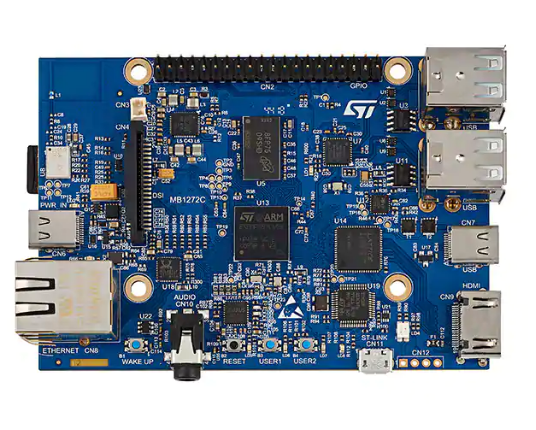
Technical Features
- STM32MP157 Arm®-based dual Cortex®-A7 32 bits + Cortex®-M4 32 bits MPU in TFBGA361 package
- ST PMIC STPMIC1
- 4-Gbit DDR3L, 16 bits, 533 MHz
- 1-Gbps Ethernet (RGMII) compliant with IEEE-802.3ab
- USB OTG HS
- Audio codec
- 4 user LEDs
- 2 user and reset push-buttons, 1 wake-up button
- 5 V / 3 A USB Type-CTM power supply input (not provided)
- Board connectors:Ethernet RJ454 × USB Host Type-AUSB Type-CTM DRPMIPI DSISMHDMI®Stereo headset jack including analog microphone inputmicroSDTM cardGPIO expansion connector (Raspberry Pi® shields capability)ARDUINO® Uno V3 expansion connectors
- On-board ST-LINK/V2-1 debugger/programmer with USB re-enumeration capability: Virtual COM port and debug port
- STM32CubeMP1 and full mainline open-source Linux® STM32 MPU OpenSTLinux Distribution (such as STM32MP1Starter) software and examples
- Support of a wide choice of Integrated Development Environments (IDEs) including IARTM, Keil®, GCC-based IDEs
Board-specific features:
- 4″ TFT 480×800 pixels with LED backlight, MIPI DSISM interface, and capacitive touch panel
- Wi-Fi® 802.11b/g/n
- Bluetooth® Low Energy 4.1
5. CC3200-LAUNCHXL
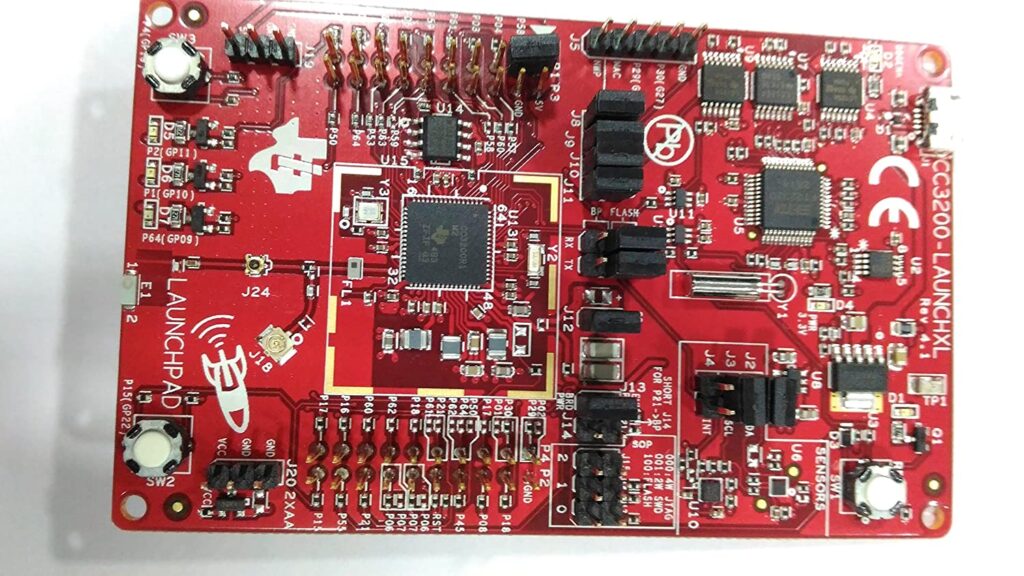
Technical Features
- CC3200 Wi-Fi wireless microcontroller (MCU) in QFN package
- Industry’s first devices to be Wi-Fi CERTIFIED™ at the chip level by the Wi-Fi Alliance™
- USB interface to PC for CCS/IAR using FTDI USB drivers
- Flash update over the USB using SimpleLink Programmer
- 2 20-pin connectors enables compatibility with BoosterPacks with added functions (BoosterPack headers)
- Standalone development platform featuring sensors, LEDs and push-buttons
- Power from USB for the LaunchPad as well as external BoosterPack
- Operates from 2 AA alkaline batteries
- On-board antenna and U.FL connector selectable using a capacitor re-work
- Supports 4 wire JTAG and 2 Wire SWD
- GNU Debugger (GDB) support over Open On chip debugger (OpenOCD)
6. BeagleBone® Green Gateway

Technical Features
- Processor: AM3358 1GHz ARM® Cortex-A8, 2×32-bit 200-MHz programmable real-time units (PRUs)
- EEPROM: 4KB
- RAM: 512MB DDR3
- On-board Flash Storage: 4GB eMMC
- CPU Supports: NEON floating-point & 3D graphics accelerator
- Micro USB Supports: Powering & Communications
- USB: USB 2.0 Host x 2
- Grove Connectors: 2 (Grove I2C x 1and Grove UART x 1)
- GPIO: 2 x 46 pin headers
- Ethernet: 1 x 10/100M Bit
- Wireless Connectivity: Wi-Fi 802.11b/g/n 2.4GHz and Bluetooth 4.1 LE
- Operating Temperature: 0 ~ 70°C
- Buttons: 3
- Power: DC Jack for power, 12V
- Dimensions: 89.0mm x 54.6mm x 19.6mm
7. BeagleBone Black
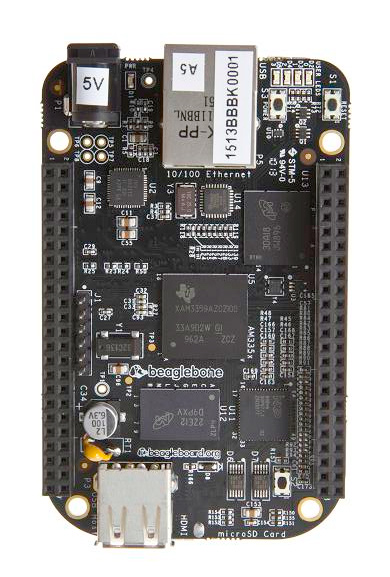
Technical Features
- Sitara AM3358BZCZ100 ARM Cortex-A8 32-Bit RISC microprocessor, up to 1GHz
- Onboard HDMI to connect directly to TVs and monitors
- More and faster memory now with 512MB DDR3L 400MHz SDRAM, 4GB eMMC Memory
- Onboard storage frees up the microSD card slot for greater expansion
- Support for existing Cape plug-in boards
- TPS65217C PMIC regulator and one additional LDO
- Debug support: Optional onboard 20-pin CTI JTAG
- HS USB 2.0 Client and Host ports
- Serial port: UART0 access via 6-pin 3.3V TTL header
- 10/100 RJ45 Ethernet
- Linux Debian Distribution flashed to the eMMC (no longer Angstrom)
8. Teensy 4.1

Technical Features
- ARM Cortex-M7 at 600 MHz
- Float point math unit, 64 & 32 bits
- 7936K Flash, 1024K RAM (512K tightly coupled), 4K EEPROM (emulated)
- QSPI memory expansion, locations for 2 extra RAM or Flash chips
- USB device 480 Mbit/sec & USB host 480 Mbit/sec
- 55 digital input/output pins, 35 PWM output pins
- 18 analog input pins
- 8 serial, 3 SPI, 3 I2C ports
- 2 I2S/TDM and 1 S/PDIF digital audio port
- 3 CAN Bus (1 with CAN FD)
- 1 SDIO (4 bit) native SD Card port
- Ethernet 10/100 Mbit with DP83825 PHY
- 32 general purpose DMA channels
- Cryptographic Acceleration & Random Number Generator
- RTC for date/time
- Programmable FlexIO
- Pixel Processing Pipeline
- Peripheral cross triggering
- Power On/Off management
9. NVIDIA Jetson Nano

Technical Features
- GPU: 128-core NVIDIA Maxwell™
- CPU: Quad-core ARM® A57 @ 1.43 GHz
- Memory: 2 GB 64-bit LPDDR4 25.6 GB/s
- Storage: microSD (Card not included)
- Video Encode: 4Kp30 | 4x 1080p30 | 9x 720p30 (H.264/H.265)
- Video Decode: 4Kp60 | 2x 4Kp30 | 8x 1080p30 | 18x 720p30 (H.264/H.265)
- Connectivity: Gigabit Ethernet, 802.11ac wireless†
- Camera: 1x MIPI CSI-2 connector
- Display : HDMI
- USB: 1x USB 3.0 Type A,2x USB 2.0 Type A, USB 2.0 Micro-B
- Others: 40-pin header (GPIO, I2C, I2S, SPI, UART), 12-pin header (Power and related signals, UART), 4-pin Fan header†
- Mechanical: 100 mm x 80 mm x 29 mm
10. Particle Boron
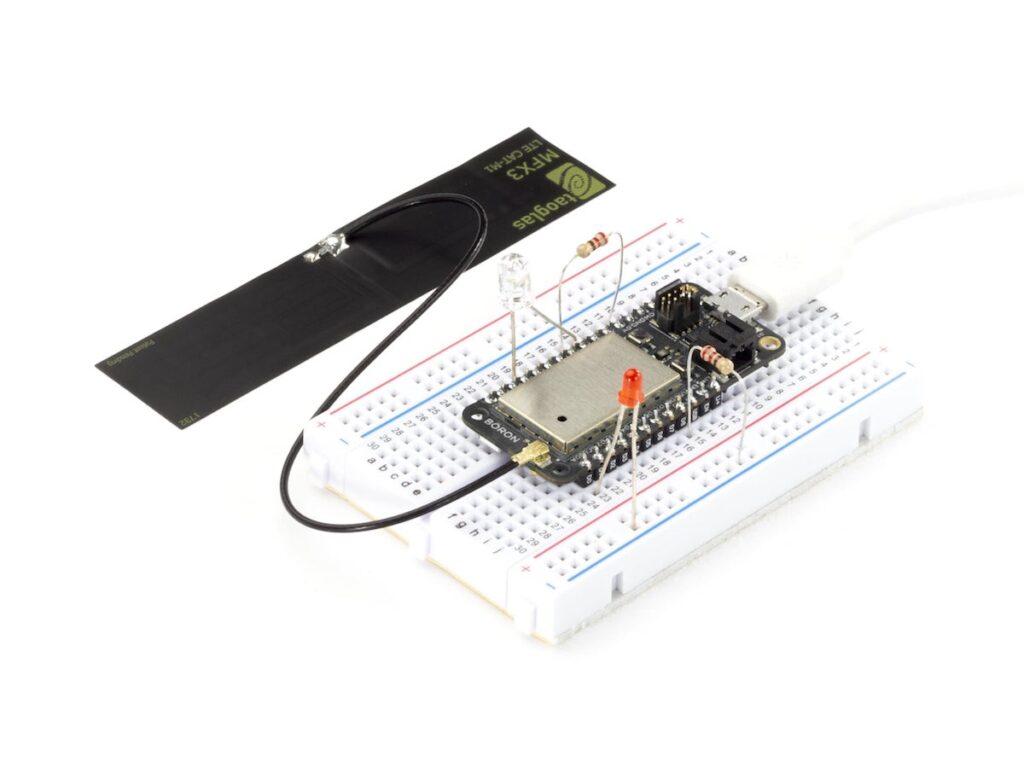
Technical Features
- Up to +8 dBm TX power (down to -20 dBm in 4 dB steps)
- NFC-A tag
- On-board additional 4MB SPI flash
- Micro USB 2.0 full speed (12 Mbps)
- Integrated Li-Po charging and battery connector
- JTAG (SWD) Connector
- RGB status LED
- Reset and Mode buttons
- Dual SIM support: Nano 4FF (unpopulated) and MFF2
- U.FL connector for external antenna
- Meets the Feather specification in dimensions and pinout
- FCC and PTCRB certified
- RoHS compliant (lead-free)
Conclusion
Here we have listed some of the development boards but there are other options as well that will best suit your product development requirements. The future is very bright with IoT development. It is helping to solve daily life problems by building different products. If you also want to develop IoT-based software to enable things that work smarter, get in touch with the top-notch IoT Development Company.
Source: https://bit.ly/3qzv8bq



